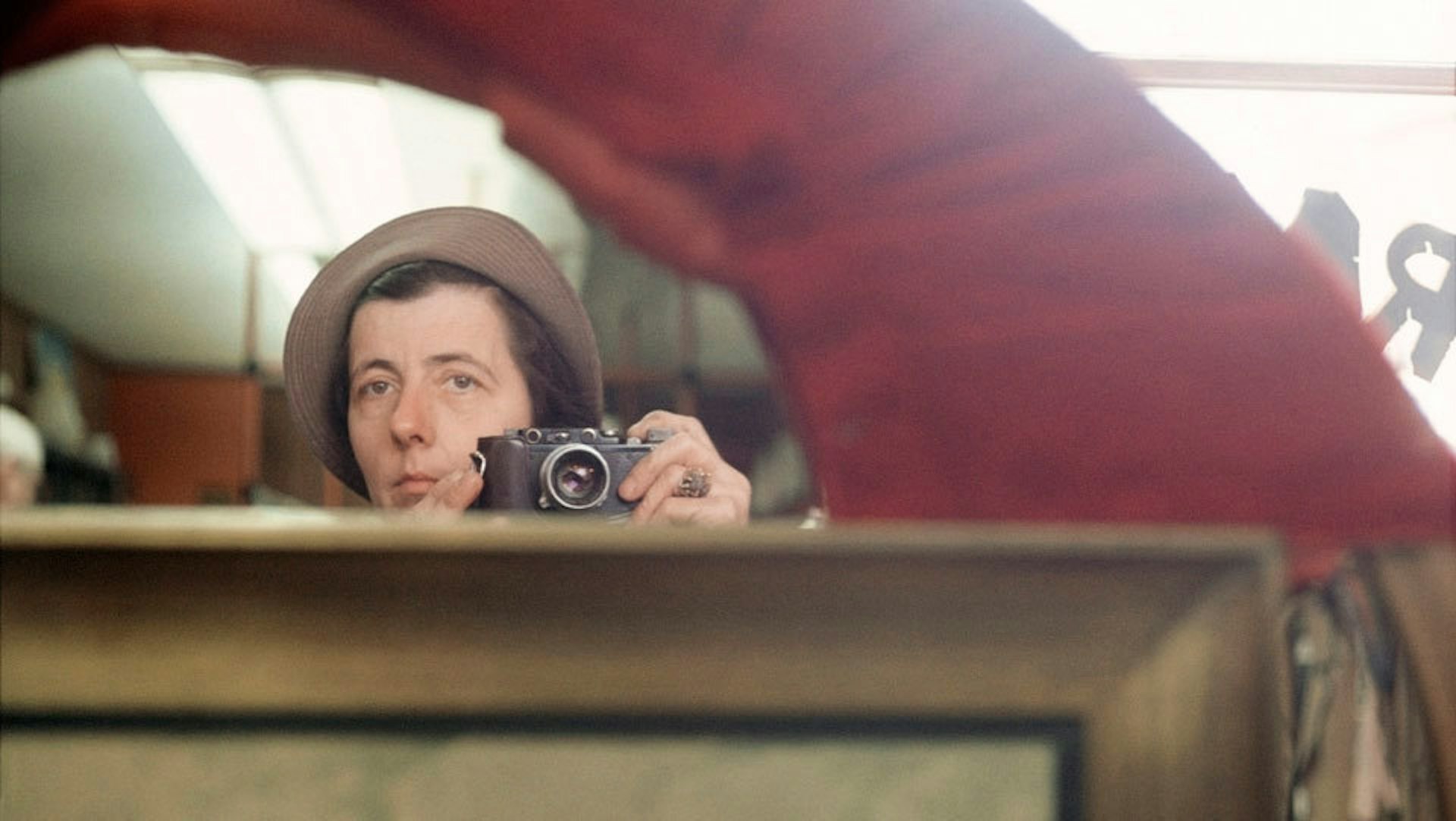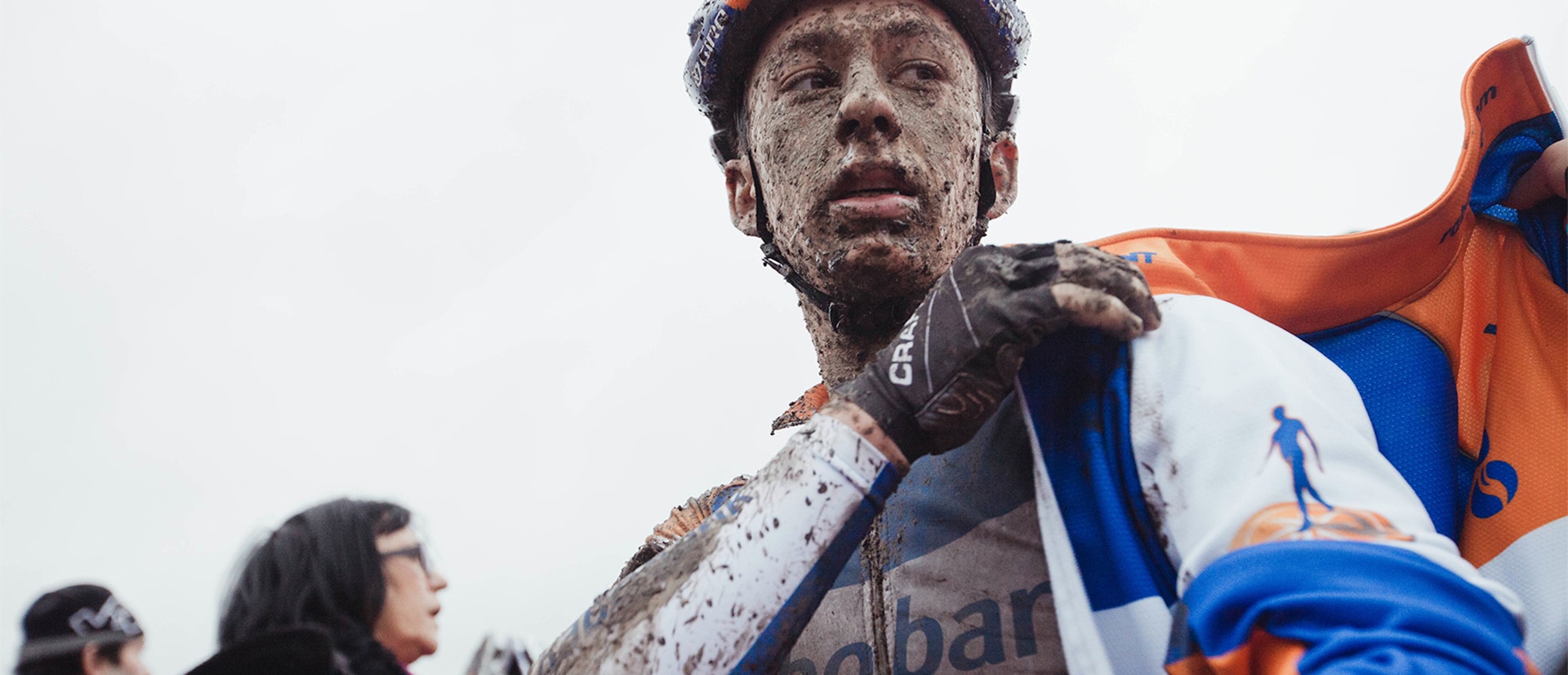
Finding Vivian Maier
- Text by Shelley Jones
- Photography by ©Vivian Maier/Maloof
How many great works of art are lost to time or accident?
This is the question posed by documentary filmmaker Charlie Siskel (Bowling for Columbine, Religulous) in his new feature Finding Vivian Maier about the mysterious nanny who shot over 150,000 incredible photographs in her lifetime.
Discovered posthumously by Chicago historian and collector John Maloof, Vivian’s work has gone on to be recognised by galleries and critics around the world for its artistic merit. But the private woman, who had no obvious family or friends, received no credit for her work while she was alive. Despite having no outlets for her creativity, Vivian continued to document the world as she saw it with her Rolleiflex stills as well as Super 8 films, audio recordings and collections of zeitgeisty things like newspaper clippings and jewellery – archiving her art meticulously at a great cost.
Charlie’s film is as much about John’s tireless investigation into Vivian’s work as it is about the artist herself. Through interviews with the families she nannied for, shopkeepers, neighbours and even a distant cousin, the details of Vivian’s life – which she self-mythologised at length – are brought into light and ultimately trumped by the vision of herself portrayed in her self-portraits.
Perhaps frustrated by a world she did not fit into, Vivian Maier created a new one through her work and in doing so has left behind a unique document of a time and place through an outsider’s eyes. An alien’s report of 1950s America. We caught up with Charlie to find out more.
How did the documentary spark to life?
I had heard about the discovery of the photographs on PBS, the local public TV station in Chicago. There wasn’t a documentary at that point and I got a call from Jeff [Garlin] saying that John [Maloof] was interested in making a film and was looking for a partner to help. When I spoke with John I learned that not only were there 150,000 photographs but he had hours and hours of Super 8 footage and audio recordings that Vivian had made. Almost like mini radio pieces, with her interviewing people. And a mountain of material she left behind – receipts, business cards, newspaper clippings, trinkets, jewellery. The thought was if we could sift through all of this evidence, this mass of material, almost like an archeological dig, maybe we could use it to tell her story. Like a detective story. And show the process of trying to piece together this person’s life.
Why were you drawn to her story?
Well I’ve always been interested in stories of double lives, hidden identities, people who keep secrets. For whatever reason that has always been a fascination of mine. The newspaper articles that I clip are often stories about people who lead double lives or people who have a secret. I think it’s just really intriguing to think that someone you’re sitting next to on the train might be a brilliant artist and you would never know it. It’s also incredible to think that but for this discovery Vivian’s work might have been lost forever. It really makes you wonder whether most of the great works of art that human beings create are lost, and aren’t discovered this way. In fact, I’m convinced that must be true. I think Vivian is exceptional in more than one way. Not only is she an exception in that she’s a brilliant artist, she’s an exception in that her work was actually discovered. And I bet most of the great works of art never are.
Do you think the art establishment is to blame?
I think things are certainly changing as artists today have other means to show their work. I think if more options had been available to her, including the fact that things are so different for women now, Vivian would have been finding outlets for her creativity. She was incredibly opinionated. I think she would have made full use of technology to share her work. I know it’s controversial because there are people that feel strongly that Vivian was creating private art for only her eyes and she would have hated any publicity. But I think that’s overstated. I think the fact that Vivian didn’t share her work during her lifetime is more of an accident of history than a master plan that played out exactly as she intended it. I believe that the world is a better place for Vivian’s photos in it, just as it is better with Emily Dickinson’s poems in it and Franz Kafka’s stories in it – even though all these people were private and expressed in some way the desire to keep their work private. They preserved their work, and didn’t destroy it. Vivian preserved hers meticulously, at an incredible cost.
It seems with all of Vivian’s art – her photography, audio recordings, films, newspaper clippings – she is trying to assert her own voice. Were you worried, by creating a backstory for her in the documentary, you were putting words in her mouth and denying her that voice?
No because it’s interesting to look at the world she was inhabiting and see what it was like. Here you have this brilliant artist who was hiding out – she describes herself as a spy – in this relatively wealthy world full of people that didn’t really bother to understand her very well. Did any of them ask to see her photographs? And I think we can learn a lot about ourselves and about Vivian from what the interviewees in the film say. I think it’s interesting when people get her wrong. Maybe it’s more interesting to hear people get her wrong than to get her right. Maybe that’s what it is to be human. We’re asking the audience to listen to the testimony of these witnesses, who knew Vivian to an extent, through their own biases and limited experiences, and it may feel like we’re hearing about her through people who didn’t really know her but maybe that gives us a little taste of what Vivian experienced, to live in a world where she was never understood. I hope that through her photographs we understand her a bit better, through Joel Meyerwitz’s insights about her sensitivities as an artist, we learn a bit more about her. That she was not just a nanny who happened to take a bunch of pictures, but a true gifted artist who dedicated her life to creating this incredible body of work.
Do you think art created outside of institutions does retain a sort of purity that is quite rare?
I think there are trade-offs that happen when you ‘come out’ as an artist. Of course you risk rejection and all of those things. And I believe Vivian did encounter that. We didn’t include this in the film, but we found a note from an editor of a local newspaper in the suburbs where she was probably working as a freelance photographer. Vivian probably did make some attempts to share her work with others and settled into a pattern, eventually, of not sharing her work. I was talking to Jeff Tweedy from the band Wilco and he said, ‘I know how her work would have changed [if it had been made public]. She would have made less of it.’ And he meant in some ways just on a practical level, that promoting work takes time. But also that you could start to pander or cater to your audience. So there are pitfalls. But I think the good things probably do outweigh the bad. You become part of a community of artists and I think Vivian would have benefitted from participating in that community – having a printer to work with, having a gallery to work with. Would something have changed about her work? Yes, but possibly for the better. Maybe she would have travelled more. Maybe she would have pursued new directions.
Do you think she used her photography as therapy to exercise past demons?
I don’t know. She was interested in art. I would really hesitate to reduce her art to a form of therapy. Scientists may be searching right now for the human gene that contributes to artistic genius, they may be searching for the gene that causes career-ending shyness also, but I’m not holding my breath for that. And I don’t know what it would teach us if we found it. I think we have more to learn from artists and novelists and photographers like Vivian, than from psychiatry and psychology. If part of her art, like her connection to children which you can see in the photos, comes from her own experience and in thinking about that we have more empathy for her, and it helps us see that we can turn our bad experiences towards a good end, then that’s great. I’m all for that.
I get the sense that, like Henry Darger, she created a fictional world with her photography, because she couldn’t form meaningful connections in the real one.
Well yes I agree with you in that there’s a tragic element to Vivian not being able to form these bonds with other people. From what we know she didn’t have a lover, she does not seem to have remained in contact with family. She saw the bonds of family life all around her that she didn’t experience herself. That said, I think she was happy. She did get to take her photos and that was what she wanted. And I think she did connect with people through her photographs, that does come across. And she did get to say things about the world, which did seem important to her as an artist. I think Vivian was very aware of class issues. I think she made very keen observations of the cruelty of the world. And I think she wanted to say things about the world with her camera. And that does seem to have filled a very big need in her life. My god, she took so many photographs and spent so much of her time doing it, it must have given her so much satisfaction, she must have gotten a great deal of pleasure from it. She was an artist with a genuine need to create art. Particularly when you consider she had no financial incentive or people to share it with.
What message do you hope your film leaves behind?
I really feel that the message from the film is that to be an artist is an ennobling thing. It will enrich the life of the artist and hopefully the lives of others too. Even when it doesn’t happen in the artist’s lifetime. If they’re lucky enough, and if we’re all lucky enough, to have our work discovered by pure accident or chance, but ultimately by someone’s tireless and hard work (in this case John’s), if the stars align in that way, then the world will be a better place for it. And it ought to give us pause to think how many works of art don’t follow that lucky path and are lost. And it ought to make us look a little differently at the strange lady sitting on the park bench or the bus driver or maybe even the stockbroker. Because there might be a brilliant artist in there. I was a corporate lawyer before I did this. I had a little secret in my briefcase riding the train to work everyday – a half-written screenplay and a bunch of ideas about stories of people with secret identities. So maybe it will help us look at ourselves and other people a little differently.
Find out more about Vivian, the film and a screening near you on the Finding Vivian Maier website.
